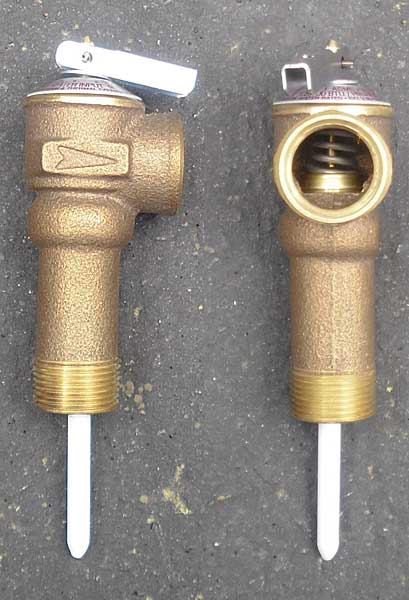DirtyBrad
New Member
I just purchased a new 50 gallon natural gas water heater and have been doing my research on installing it, but I'm not clear on how the TPR valve should drain. The old unit had a vertical pipe that just terminated about 18" from the floor, so any water would just dump out next to the water heater.
I've read that I should have the valve draining to a floor drain, but I don't have one. The water heater is located in a small room in the basement with a bare concrete floor and the rest of the basement is finished with tile. Obviously, I'm left with the possibility of this thing just draining endlessly into my basement and I'd like to prevent that.
I do have a standpipe drain whose opening is slightly higher than the TPR valve. My AC drains into that by way of an electric pump mounted about two feet up from the floor and 20' or so of plastic tubing. That pump has multiple openings, so my thought was to just run a pipe from the new TPR to it and let it do its thing. I also considered getting a second pump, so there would be one dedicated to each appliance.
I have a few reservations about this. First, I'm not sure if those pumps can handle the kind of output the TPR valve might be putting out. Second, I wouldn't know if the valve was tripping. I saw an emergency sump pump that had battery backup and would sound an alarm if activated, but I don't have a sump pit. I guess I could put it in a bucket or something and run a hose into that, but it feels pretty hacky.
Just looking for general thoughts and suggestions on this, thanks for your time.
I've read that I should have the valve draining to a floor drain, but I don't have one. The water heater is located in a small room in the basement with a bare concrete floor and the rest of the basement is finished with tile. Obviously, I'm left with the possibility of this thing just draining endlessly into my basement and I'd like to prevent that.
I do have a standpipe drain whose opening is slightly higher than the TPR valve. My AC drains into that by way of an electric pump mounted about two feet up from the floor and 20' or so of plastic tubing. That pump has multiple openings, so my thought was to just run a pipe from the new TPR to it and let it do its thing. I also considered getting a second pump, so there would be one dedicated to each appliance.
I have a few reservations about this. First, I'm not sure if those pumps can handle the kind of output the TPR valve might be putting out. Second, I wouldn't know if the valve was tripping. I saw an emergency sump pump that had battery backup and would sound an alarm if activated, but I don't have a sump pit. I guess I could put it in a bucket or something and run a hose into that, but it feels pretty hacky.
Just looking for general thoughts and suggestions on this, thanks for your time.

